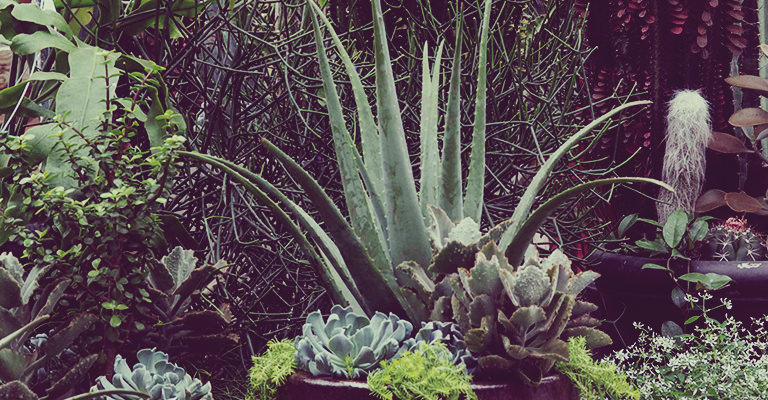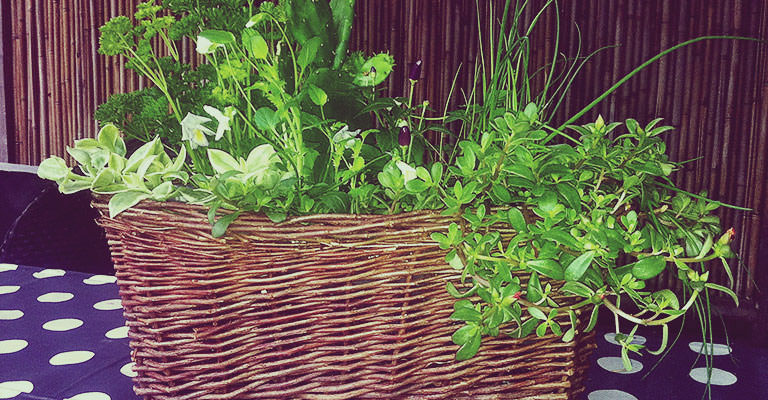Cactuses and succulent plants are very easy to grow, indoors or outdoors. What's more, some varieties are edible!
Cactuses and succulent plants are little demanding and can be grown in open soil or in containers. With a peat-based soil that drains well and a sunny location, you have all it takes to create highly original arrangements, whether in pots or flower boxes. You can also plant them in a flower bed along with perennials and tropical-looking annuals.
Of course, some of the non-hardy plants will have to be taken indoors come fall. Once inside, you'll only need to water them once a month. You could also simply treat them as annuals and compost them after the first frosts of fall.

"Picture 1: Edible flower box containing a prickly pear (Opuntia ficus-indica)"
Some cactuses and succulent plants, like the prickly pear (Opuntia ficus-indica), have an additional asset: they're edible! The prickly pear is a bunny ears cactus whose stems and fruits can be eaten. Cooked on the BBQ or just raw, this opuntia's stems (take care to get a cultivar with no needles) are great in a salsa. The aloe (Aloe vera) is also edible. Delicious smoothies can be made from aloe and pineapple leaves. Perfect to get back on your feet after a big party! The aloe's sap has medicinal properties: it helps mistreated bowels recover more quickly, and will speed up the healing of wounds, burns, stings and sunburns. Finally, purslanes (Portulaca) and stonecrops (Sedum) are also succulent plants that can be eaten. Those are perennial plants that will easily resist a harsh Canadian winter.

"Picture 2: Potted arrangement containing an aloe (Aloe vera) and stonecrops ‘Angelina’ (Sedum rupestre ‘Angelina’)."

By Albert Mondor, horticulturist
Subscribe to our newsletter to receive our gardening tips, news and more directly in your inbox! Fill in the form below. Please note that fields with an * are required.